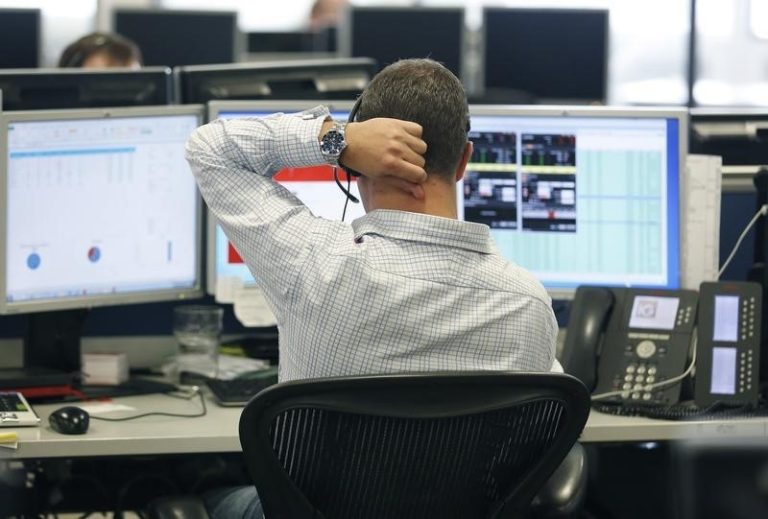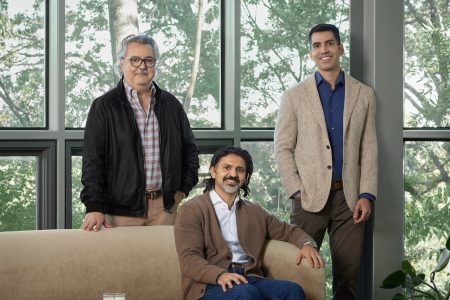© Reuters. Rex Nielsen (right) and Mark Syvret, electric vehicle repair course attendees at automotive training provider Pro-Moto, run diagnostics on a Renault Zoe battery that has been removed, in Ash Vale, Britain, July 19, 2023. REUTERS/Nick Carey
2/5
By Nick Carey, Paul Lienert and Giulio Piovaccari
LONDON/DETROIT/MILAN, England (Reuters) – A global shortage of technicians and independent repair shops qualified to fix electric vehicles (EV) threatens to increase repair and warranty costs for drivers, potentially undermining upcoming deadlines to cut vehicle carbon emissions.
From Milan to Melbourne to Malibu, technician training organizations, warranty providers and repairers say that independent repair shops will be vital for making EVs affordable because they are far cheaper than franchise dealers.
Many garage owners balk at training and equipment costs for fixing high-voltage EVs – with 400- and 800-volt systems that could electrocute and kill unwary or untrained technicians in seconds – especially with relatively few EVs on the road.
Along with electrocution risks, the risk of EV fires – which are notoriously hard to put out – also has to be taken seriously.
Roberto Petrilli, 60, who owns an independent repair shop in Milan, is reluctant to spend 30,000 euros ($32,600) on the needed equipment when EV sales in Italy are still low and the charging network is tiny.
“I am seven years away from retirement and I think it is not worth it,” said Petrilli.
The auto repair industry has already been short of workers since the pandemic. The Institute of the Motor Industry (IMI (LON:)) based in Hertford, England, develops automotive training courses and is currently rolling out EV courses across China and aims to do so in India and across Europe. It forecasts that Britain, with a 2030 fossil-fuel car sale ban, could be short 25,000 EV technicians by 2032.
In the United States, the world’s No. 2 auto market after China, EV sales growth has trailed Europe’s, but the Bureau of Labor Statistics predicts around 80,000 electrician jobs will be needed annually through 2031, which includes technicians to fix EVs or install EV chargers.
And Australia could be 9,000 EV technicians short by 2030, the Victorian Automotive Chamber of Commerce predicts.
Auto experts fear mechanics like Petrilli in Milan will simply avoid EVs – leaving consumers with higher bills and longer repair times.
Data shared with Reuters by UK used car warranty provider Warrantywise shows costs are already rising – with a one-year warranty for a Tesla (NASDAQ:) Model 3 costing more than triple the average for comparably-priced fossil-fuel models.
CEO Lawrence Whittaker said Warrantywise must use expensive franchise dealers to fix EVs because they more often have qualified technicians than independent shops.
Whittaker’s concern is that higher insurance and warranty costs mean EVs will remain too expensive for many consumers.
“How are people going to afford the higher repair costs?” he said.
‘FEAR OF THE UNKNOWN’
Mark Darvill, managing director at Hillclimb Garage in High Wycombe, about 30 miles (48.3 km) northwest of London, has embraced EVs and hybrids, which he says make up around 15% of repairs.
Darvill says Hillclimb’s planned investment of 25,000 pounds ($31,400) in training and equipment will pay for itself in late 2024 when EVs and hybrids should make up 35% of repairs.
Customers lacking EV repair options already come from far afield.
“What’s holding a lot of independents back is fear of the unknown,” Darvill said.
The IMI estimates 20% of UK automotive technicians have received some EV training, but only 1% are qualified to do more than routine maintenance.
EV sales jumped 33% in Britain in the first half of 2023, but the IMI said take-up of EV qualifications fell 10% in the first quarter and an estimated 31% in the second quarter compared to the number of people taking those courses in the same period in 2022.
London-based premium car service company Addison Lee operates hundreds of EVs and sustainability director Andrew Wescott said “it already takes a lot longer” to repair them than its diesel vehicles.
Carmakers are scrambling to train technicians. Market leader Tesla has launched courses at U.S. community colleges to train prospective technicians. Tesla also provides EV training for independent U.S. repair shops.
Daniel Brown, head of automotive product development at Germany’s Lucas-Nuelle, which produces EV training course equipment, worries unqualified technicians could be pressured to fix high-voltage EVs, adding “it’s just a matter of time until someone gets hurt.”
‘A FREAKING LONG TIME’
Some groups are trying to fix the shortage.
The Siemens Foundation has unveiled a $30 million program to train U.S. technicians to install and maintain EV chargers. [LINK TO SIEMENS SIDEBAR]
A lack of trained workers will “slow the progression” of shifting to electric, foundation CEO David Etzwiler said. The foundation, which focuses on workforce training and education, has announced the funding to address the “tremendous and immediate” need to train technicians, Etzwiler said.
The Motor Traders’ Association of New South Wales (MTA NSW) – where EVs should make up 50% of new car sales by 2030 – estimates basic EV training will cost 100 million Australian dollars ($64.7 million) for the state’s nearly 50,000 licensed automotive technicians.
MTA NSW head of government affairs Collin Jennings said small repair shops will need subsidized EV training or many will likely stick to fossil-fuel models. The distances between many smaller Australian towns makes that a problem in the making.
“Who’s going to fix your Tesla if it breaks down there?” Jennings said.
The IMI is seeking 15 million pounds from the UK government to help independent repairers afford training, said CEO Steve Nash.
But Nicholas Wyman, executive director of the U.S. Institute For Workplace Skills and Innovation, said most repairers are on their own.
“If you’re waiting for the (U.S.) government to take action, you’ll be waiting a freaking long time,” he said.
($1 = 0.9200 euros)
($1 = 1.5466 Australian dollars)
($1 = 0.7962 pounds)
Read the full article here









